By Nilovna Chatterjee
Cover crops have been gaining popularity as part of the movement to transform the agriculture industry to regenerative agriculture. In recent years, cover crops have generated excitement as a way to improve soil health, reduce erosion, and help improve the sustainability of agriculture practices. Regenerative agriculture has been heralded by scientists, policymakers, farmers, as a way to scale approaches that significantly help to improve the environmental impact of farming. This article will talk about the nitty-gritty of different types of cover crops and how they improve soil health and productivity.
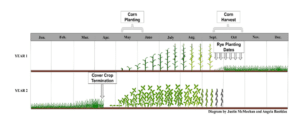
Figure 1: Cover crop between a typical corn-soybean rotation.
Artwork: Justin McMechan and Angela Bastidas, University of Nebraska-Lincoln
What are cover crops and why are they important?
Cover crops simply mean growing a plant to “cover” and protect the soil when it would otherwise be bare (Figure 1). Live plant roots reduce erosion and water pollution and lead to more productive soil with time (Figure 2). A recent study conducted by Basche and DeLonge. 2019 reported that keeping living roots in the soil absorbs more precipitation. Instead of planting cover crops, if the soil is left bare between two cash crops, water will not infiltrate into the soil. Often, the water run-off from bare soil leads to soil erosion or water pollution. The roots help break through compacted soil layers and allow water to flow through.
Once a cover crop is established, it is important to ensure they don’t interfere with the row crops in the spring. It is essential to note that cover crops are not grown for their seeds but to keep the soil covered to improve soil health. Cover crops are terminated before the crop reaches maturity or produces seeds. The timing of termination and the type of termination are critical for cover crop control. Leguminous cover crops are killed at flowering by mowing, grasses such as cereal rye are terminated chemically using glyphosate or 2,4-D ester 10-14 days before planting the cash crop. Several cover crop species, such as oats, cannot survive the cold winters and die over the winter (winter kill) without terminating it mechanically or chemically.
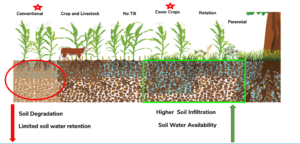
Figure 2: Soil-water retention across various management practices.
Image source: Basche and DeLonge (2019). Artwork: Lana K Johnson, PlosOne
Ecosystem services of cover crops
As a critical agro-ecological strategy, cover crops provide a plethora of ecosystem services. Cover crops function as green manure when it is plowed under the soil. Cover crop biomass increases the plant-residue left on soil surfaces, which get incorporated into the soil layers. Increased residues from cover crop biomass minimize soil disturbance and control erosion. Cover crops also improve soil structure, water-stable aggregates, help control weeds, maximize water and nutrient uptake efficiencies of cropping systems and aid in higher net ecosystem productivity and subsequent long-term, “secure” carbon (C) storage (sequestration). The benefits of cover crops also extend to forage provision for livestock, pollinator habitat support, and water pollution reduction.
Cover crop: Type makes a difference
Cover crops are not “one-size fits all”. There are many cover crops to choose from, and farmers must carefully choose to get the best results for their land. Some of the broad categories of cover crops are:
- Grasses
- Legumes
- Brassicas
Grasses (Examples: rye, wheat, barley, oats, buckwheat)
Grasses are efficient at scavenging nutrients (especially nitrogen) leftover from a previous cash crop. They also produce a substantial amount of residue biomass that adds to soil organic matter. Farmers intending to improve soil organic carbon often opt for grasses as cover crops as they contain higher carbon than legumes and brassicas. Upon breakdown in the soil, the cover crop residues from grasses improve weed control and soil carbon sequestration. Some of the grasses, such as rye, are winter-hardy and quick to germinate. Rye can be planted later in the fall than most other species, even in cold climates. However, even though grasses scavenge nutrients efficiently, they are not very efficient in releasing the scavenged nutrients upon breakdown, making it difficult for the subsequent cash crops to access the grass cover crop residue’s nutrients. Farmers who are primarily interested in improving nitrogen availability often opt for legume cover crops instead of grasses.
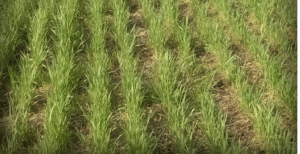
Figure 3: Grass species: Cereal rye
Source: www.covercrop.com
Legumes (Examples: clovers, field peas, hairy vetch, alfalfa)
The leguminous cover crops fix atmospheric nitrogen, prevent soil erosion, and add organic matter to the soil. Biomass production usually happens during spring. Some legumes such as hairy vetch and crimson clover may supply over 100 pounds of nitrogen per acre to the next cash crop. Other legumes such as field peas and red clovers could provide anywhere between 30 and 80 pounds of nitrogen. Unlike grasses, leguminous cover crops are not very efficient at removing excess nitrogen. The residues from legumes are lower in carbon and higher in nitrogen than grasses, so the cover crop residues degrade more quickly. Faster degradation of leguminous cover crop residues also means the nitrogen and other nutrients from the legumes are released faster than grasses. Because legumes degrade more quickly, the residues are not as effective for weed control. And, unlike grasses, legumes do not add much to the soil organic matter. You can see from this that legumes and grasses provide complementary benefits. To get the best of both worlds, some farmers use a combination of grasses and legumes as cover crops.
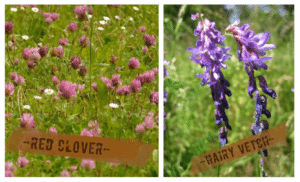
Figure 4: Leguminous cover crops: red clover (L) and hairy vetch
Image source: Iowa Learning Farms
Brassicas (Examples: mustard, radish, canola, sunflower, rapeseeds)
Brassicas are not as popular a cover crop choice as grasses and legumes. Still, they do offer unique soil health benefits such as reduction of soil erosion and natural pest management. Brassicas release chemical components (glucosinolates) that are toxic to soil pathogens. Brassicas are not as effective as commercial pesticides but can help reduce pesticide use. Brassicas are also efficient in breaking up compacted soils, so that water can flow more freely. On the downside, most brassicas will winterkill and rapidly decay due to their high water content. Nutrients within the crop tissues get lost easily. Some farmers mix brassicas and grasses as cover crop species to harness both types of soil health benefits.
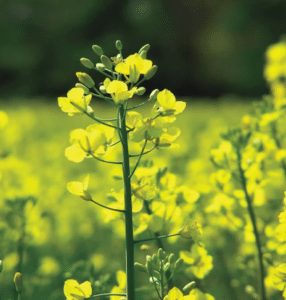
Figure 5: Brassica cover crop : Mustard
Image source: West coast seeds
Cover crop decision making: Species selection and seeding techniques
Choosing the right cover crop is all about balancing and weighing options. Farmers are keen to protect their soil. Most farmers choose the cover crop species for their fields based on individual farm’s requirements. For example, farmers who intend to build soil organic matter and improve soil structure usually choose a winter-hardy grass cover crop such as rye. Grasses do not fix any nitrogen out of the atmosphere but accumulate large quantities of nitrogen from the soil and do not leave much nitrogen for the cash crop. To address the nitrogen challenge with grass cover crops, farmers often use grasses and legumes as a cocktail (multiple species) instead of a single cover crop.
Seeding Techniques and Planting window
Planting date and seeding methods are again a critical component in cover crop establishment in Fall. For faster germination, farmers often drill cover crops into the soil post cash crop harvest. Drilling maximizes seed to soil contact but seeding occurs later (post cash crop harvest) resulting in lower cover crop biomass. Farmers also use high clearance seeders for seeding cover crops earlier into the standing cash crops to minimize seed loss and increase cover crop biomass production. However, seed to soil contact is not as great as using a drill or a planter.
When cash crop harvest gets delayed, aerial seeding of cover crops into the standing cash crop is a preferred seeding method among farmers. It allows more cover crop variety due to earlier seeding but comes with a price tag for application and higher seeding rates. Earlier planting also increases the chances of higher biomass production.
Closing remarks
Cover crops mimic the fitness regimen of our bodies. Sometimes we adopt a single exercise to solve a particular problem. Other times, we choose a broader workout regime for improved overall fitness. A fitness trainer may recommend arm days, leg days, and total body workouts. Similarly, a farmer may choose a single cover crop to solve a specific problem or choose a mix of different cover crops to maximize soil health benefits.
To solve the world’s regenerative agriculture transition, you have to start with science. That’s why CIBO has paired a scalable technology approach with a science-based understanding of cover crops. With CIBO, users can get insight into how to find and manage land insights at scale for any U.S. parcel, field or farm for those committed to improving their global footprint. It’s our assembly of powerful factors that make CIBO’s sustainability score unique.
About Nilovna Chatterjee
Nilovna Chatterjee is a Crop Modeling Scientist at CIBO Technologies, a science-driven software startup. Prior to CIBO, she worked for the University of Nebraska-Lincoln, department of Agronomy and Horticulture as a postdoctoral research associate. She holds a Bachelor of Engineering, Master of Engineering from Vellore Institute of Technology, Vellore, India and a Ph.D. in Forest Resources Conservation and Soil Science from the University of Florida, Gainesville.



